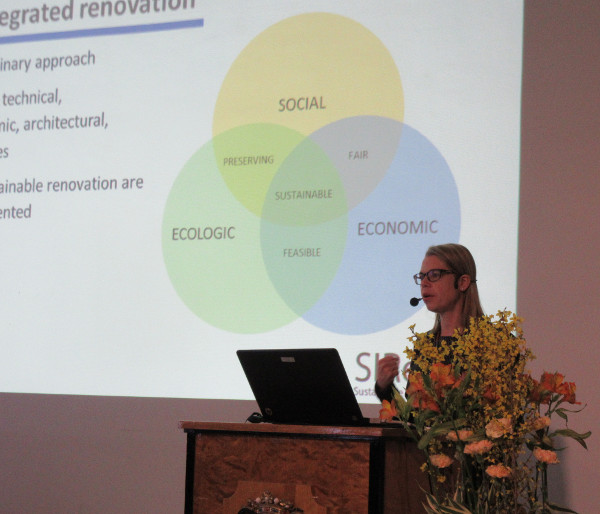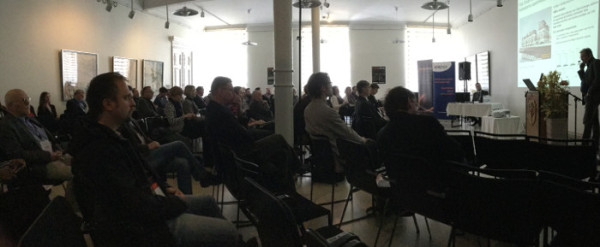There is a wide spectrum of buildings in need of renovation
The morning of the last day of EnergyWeek began with a rush, as the doors of the exhibition hall holding the Energy & Buildings event opened. A little later the seminar hall was packed full of people, and Hannele Pokka, the Permanent Secretary of the Ministry of the Environment officially opened this final event.
 Hannele Pokka, the Permanent Secretary of the Ministry of the Environment
Hannele Pokka, the Permanent Secretary of the Ministry of the Environment
The morning of the last day of EnergyWeek began with a rush, as the doors of the exhibition hall holding the Energy & Buildings event opened. A little later the seminar hall was packed full of people, and Hannele Pokka, the Permanent Secretary of the Ministry of the Environment officially opened this final event.
Pokka told the audience that she had visited EnergyWeek a few years before and was happy to find that it was now even bigger and more impressive. She continued by saying that half of Finland’s building stock was constructed in the 1980s or later, that is, in the aftermath of the 70s’ energy crisis. Restricting the emissions resulting from housing is cost-effective if existing buildings are renovated energy-efficiently instead of replacing them with new ones.
“Over the last few decades, renovating has become more important than building new housing. We have a lot of buildings that were built after the 1960s, which means that there is great variety in their styles and engineering. In renovating, it is important to take the character of the building into account without forgetting cost-effectiveness,” Pokka noted.
 Kristina Mjörnell
Kristina Mjörnell
Professor of Building Physics, Kristina Mjörnell, presented the research network SIRen in Sweden. This network is focused on promoting sustainable integrated construction and, like Pokka, Mjörnell also highlighted the renovation needs of buildings built after the war years.
According to Mjörnell, it is not easy to estimate when renovation will be cost-effective nor to calculate its profitability. Residents must also be taken into account. The map Mjörnell presented showed that people who live in areas consisting of buildings that are in severe need of renovation generally have a low income level. Renting is more common in Sweden than in Finland, which is why Mjörnell often emphasised that performing an energy renovation must not raise the price of housing too much for the residents.
“Renovation must be sustainable from all points of view, whether examined on financial, environmental or social grounds," she concluded.
Mikael Paronen from Arcada University of Applied Sciences
Mikael Paronen, Head of the Department of Energy and Materials Technology at Arcada University of Applied Sciences in Helsinki, asked in his address whether a building’s U-values can be measured or whether they can be looked up in a chart. He presented the groundbreaking measuring method developed by Arcada’s research team, which has revealed that the true U-values of new buildings are sometimes very far from the calculated U-values evident at the design phase. The U-values of old buildings are taken from charts and even they seldom hold true, but Arcada’s method makes it possible to measure their true U-values too. He also asked why U-values are calculated in the first place? It is to plan energy renovations, to ensure the quality of the construction work, to optimise comfort and to prevent humidity damage.
Austrian researcher Tobias Waltjen presented the seminar audience with a catalogue compiled by the Austrian Institute for Healthy and Ecological Building. This directory displays various old structural engineering solutions and methods, as well as materials for energy-efficient renovation. The catalogue presents various material alternatives, which Waltjen claims are not all sensible in terms of costs, although technically possible.

[contact_member,name=Mauritz Knuts,id=22,details=Name]
